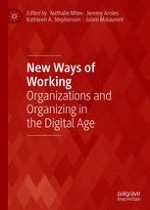This volume focuses on new ways of working, and explores implications of these new practices with a particular emphasis on the place occupied by technology, materiality and bodies within contemporary working configurations. It draws together an international range of scholars to examine diverse subjects such as: the gig economy, social media as a work space, the role of materiality in living labs, managerial techniques and organizational legitimacy. Drawing on global perspectives, from France to Nigeria, this book presents a fascinating examination of the many new ways people are working, and relating to their work.
Part of the esteemed Technology, Work and Globalization series, this book is valuable reading for scholars working on organizational studies, ethnography, technology management, and management more generally.
